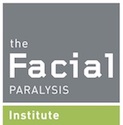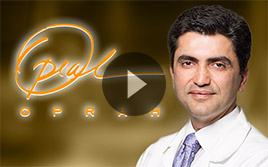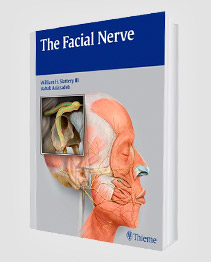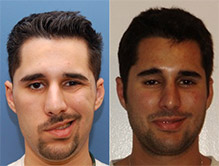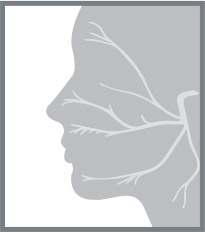Parotid surgery is a complex procedure and must be performed by a team of multi-specialty experts, including a head and neck surgeon and facial plastic and reconstructive surgeon. Otherwise, a failed parotid gland surgery puts a patient in danger of facial nerve damage that affects his or her ability make facial expressions and close the eyes.
There are two parotid glands, and each gland is located in front of the ear on both sides of the face. The parotid glands, along with the sublingual and submandibular salivary glands, are connected to a tube that moves saliva from the gland to the mouth. These glands produce and secrete saliva and protect the mouth against bacteria that causes cavities and other oral health issues.
Parotid gland tumors are among the most common types of salivary gland tumors. They sometimes cause a mass or swelling to occur along the jaw or cheek. The majority of parotid gland tumors are called pleomorphic adenoma and are benign.
What Is the Link Between the Parotid Gland and Facial Nerve?
The facial nerve passes through the parotid gland and is responsible for facial expressions and movements. As such, the facial nerve plays a key role in a person’s ability to communicate both verbal and non-verbally.
Meanwhile, parotid gland surgery involves the removal of a parotid tumor. Yet removal of a parotid tumor must be performed carefully due to the parotid gland’s proximity to the facial nerve.
Dr. Babak Azizzadeh is globally recognized for his facial nerve expertise. His goal is to help a parotid surgery patient remove a tumor without damaging his or her facial nerve. To accomplish this goal, Dr. Azizzadeh prioritizes facial nerve preservation during parotid surgery.
Dr. Azizzadeh works with Dr. Babak Larian, a highly trained parotid surgeon, to perform parotid surgery. Together, Dr. Azizzadeh and Dr. Larian craft a custom parotid surgery plan designed to simultaneously remove a patient’s parotid tumor and preserve his or her facial nerve.
How Is Parotid Gland Surgery Performed?
During a parotid surgery, Dr. Larian first makes a small incision along the skin’s natural creases; this helps hide scarring. Dr. Larian next lifts the skin from the parotid gland and removes the gland from surrounding tissue. Then, Dr. Larian and Dr. Azizzadeh identify the main trunk of the facial nerve and use a Nerve Integrity Monitor to safeguard the facial nerve and all of its branches.
After Dr. Larian removes a parotid tumor, Dr. Azizzadeh stimulates facial nerve branches and the facial nerve’s main trunk; this ensures the associated facial nerve muscles are working properly. Finally, Dr. Larian and Dr. Azizzadeh reconstruct the treatment area so both sides of a patient’s face are symmetrical.
In rare instances, the facial nerve cannot be preserved during parotid surgery. These instances require Dr. Larian and Dr. Azizzadeh to reconstruct the facial nerve. Or, Dr. Larian and Dr. Azizzadeh repair facial nerve damage using a nerve graft or other advanced techniques.
Dr. Larian and Dr. Azizzadeh understand that each parotid surgery patient’s facial nerve anatomy is unique. As a result, the process of tracking the facial nerve varies based on the patient.
With their comprehensive approach to parotid surgery, Dr. Azizzadeh and Dr. Larian limit the risk of facial nerve damage and associated facial paralysis. They also help a parotid surgery patient achieve a balanced, natural-looking facial appearance
Schedule a Parotid Surgery Consultation at The Facial Paralysis Institute
If an individual is dealing with sudden facial paralysis, it is important to go to an emergency room immediately for a proper diagnosis. If an individual’s facial paralysis symptoms last nine months or longer, parotid surgery is sometimes required.
Dr. Azizzadeh can perform a consultation to help an individual determine if he or she qualifies for parotid surgery. At this time, Dr. Azizzadeh learns about a patient and analyzes his or her facial paralysis symptoms. If Dr. Azizzadeh believes parotid surgery is the best treatment for facial paralysis, he then works with his team to craft a custom treatment plan.
Dr. Azizzadeh is happy to meet with a patient, review this individual’s facial paralysis symptoms and help him or her determine if parotid surgery can address these issues. To schedule a parotid surgery consultation at The Facial Paralysis Institute, please contact us today at (310) 657-2203.
Sources:
https://www.parotidsurgerymd.com/parotid-surgery/facial-nerve-preservation/
https://docs.google.com/document/d/14yRt_K8ip8_aZYFKXyjrjC2aLtBIPglhlNh6pIcHvTI/edit
https://facialparalysisinstitute.com/blog/preserving-the-facial-nerve-during-parotid-surgery/
https://www.verywellhealth.com/parotid-gland-513663
https://www.mayoclinic.org/diseases-conditions/parotid-tumor/cdc-20388269
https://www.mayoclinic.org/diseases-conditions/salivary-gland-cancer/symptoms-causes/syc-20354151
Request your consultation with Dr. Azizzadeh today
Call us at (310) 657-2203 to schedule an appointment.
Schedule a Consultation